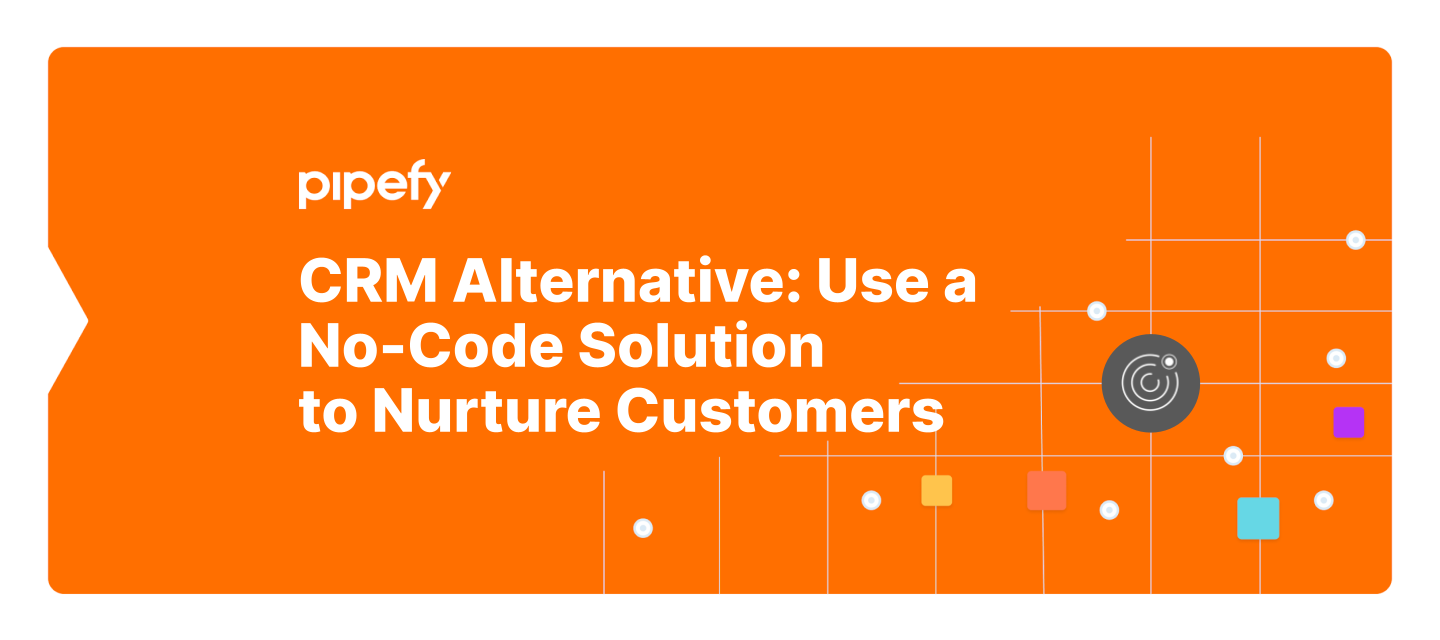When it comes to customer relationship management for SMBs, spreadsheets and custom-built solutions aren’t the only games in town. No-code software offers a flexible alternative that lets workflows scale with your business.
Managing CRM with no-code workflow software
The point of a CRM workflow is to unify sales, marketing, and customer support functions in order to build healthy relationships and drive sales. But for many SMBs, the only options have been spreadsheets or custom-built CRM solutions.
Spreadsheets will eventually become unmanageable, and custom builds consume time and other resources that could otherwise be harnessed to drive business growth. No-code tools offer a flexible alternative that’s customizable, easy to use, and ready to scale as the business evolves.
In this article, we make the case for using no-code software as an alternative to spreadsheets or custom CRM builds. We’ll review the essential elements of a CRM, illustrate how each component enhances relationships with your customers, and identify some of the most common characteristics of successful customer relationship management.
Then we’ll show you how this translates into no-code software.
If you’re already familiar with the basic building blocks of CRM, feel free to skip this section using the jump links on the left.
What is CRM? A quick overview
“CRM” stands for customer relationship management. It’s an approach to business that harmonizes the marketing, sales, and customer service processes in order to deliver a better customer experience.
People sometimes use the term “CRM” to refer to a specific type of software that organizes and tracks their customer interactions. These are typically the complex, enterprise-level solutions such as Salesforce.
For the remainder of this article, we will use “CRM” to refer to both the process of customer relationship management, as well as the software companies, use to manage this critical business process.

Common elements of CRM
The goal of customer relationship management is to connect and coordinate every process that touches the customer. The cycle begins with marketing and awareness, follows the customer through the sales process, (including post-sales activity such as product delivery/support) and then applies any insights learned throughout the customer journey back into the marketing and sales processes.
Marketing
Usually the first point of contact with potential customers. The activities in the marketing process drive the prospect through the marketing funnel stages of interest, consideration, and intent. At this point, qualified leads are handed over to the sales team.
Sales
Qualified leads require special attention and education, and the sales process is designed to help customers make a choice that’s right for them. Sales teams nurture leads to the point where they are ready to purchase and then guide them through the closing process.
Product
Your product (or service) also plays a key role in CRM. Once a sale is closed, implementation or delivery occurs at a crucial moment for the customer experience. Feedback from customers (and insights from your CS team) can help refine and improve your product for future marketing and sales activity.
Customer Support
Upon closure of the sale, the customer may then be transitioned to the customer support (CS) team to ensure a smooth implementation and to help new users become familiar with the product or service. The CS process can capture useful information for your sales and marketing teams.
| It’s common for SMBs and startups to not have a clearly defined workflow for each of these functions. As businesses scale, however, having organized and unified workflows in place can bring efficiency and visibility to sales, marketing, and CS processes. This helps improve the customer experiences and drive additional sales. |
How SMBs manage sales and customer relationships
SMBs have typically relied on one of three methods to manage their sales and customer relationships: spreadsheets, custom-built solutions, and no-code tools. Each approach has its unique benefits and challenges.
Spreadsheet Method
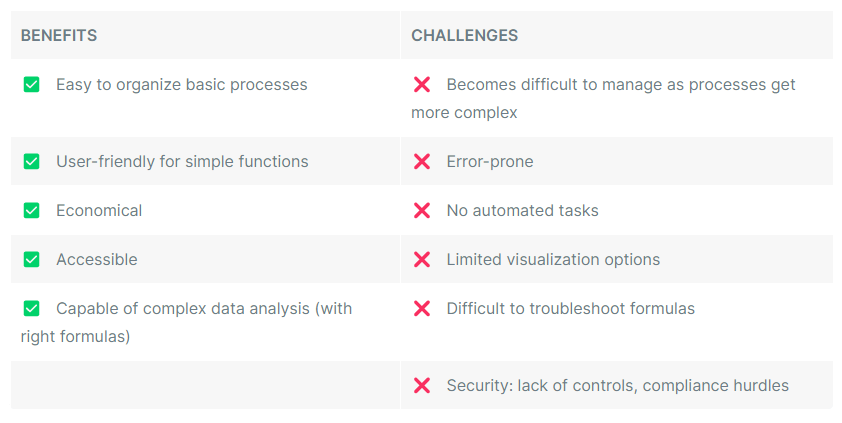
Hire a Developer to Build a Custom Solution
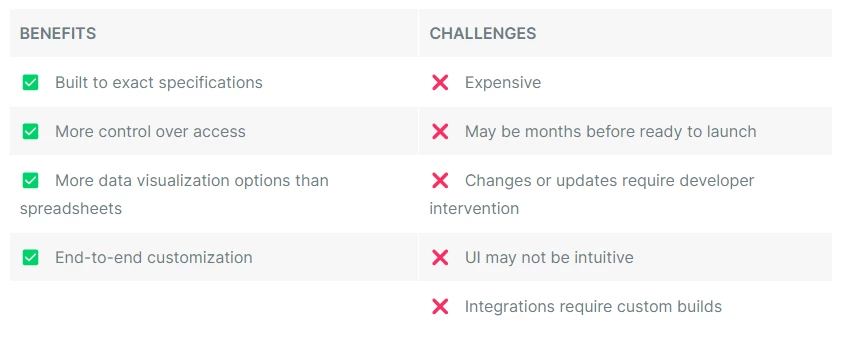
No-Code Workflow Management Software
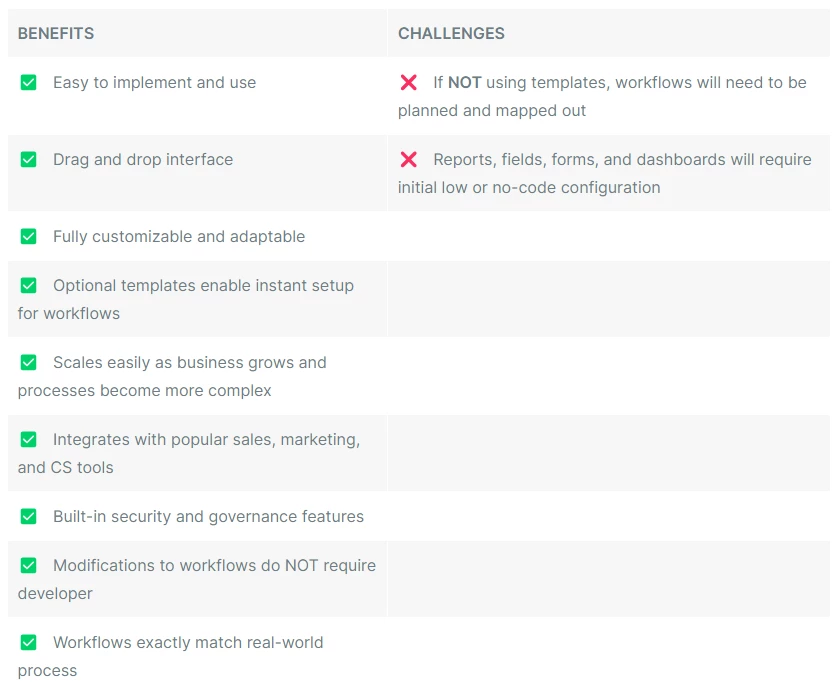
What is no-code software?
No-code refers to a software platform that can be used and configured by people without backgrounds in software development or IT. More specifically, no-code software empowers users to make limited changes without the assistance of a professional developer.
The no-code aspect of these tools is critical for SMBs and startups because it enables them to remain agile: no-code software can be reconfigured on the spot by anyone with user permission. That means no new expenses and no waiting on IT to make changes or revisions.
It also allows for flexibility and growth. No-code process management tools can be used to organize and optimize processes that are simple now, but which may deepen in complexity as the business expands or changes.
How does no-code software work?
No-code is designed to be highly visual and simple to use. To qualify as “no-code” or “zero code,” the software must be usable by anyone with a basic understanding of drag-and-drop interfaces, so pretty much anyone who uses a smartphone or laptop on a regular basis should be able to quickly become adept with a no-code interface.
Advantages of using no-code software for CRM
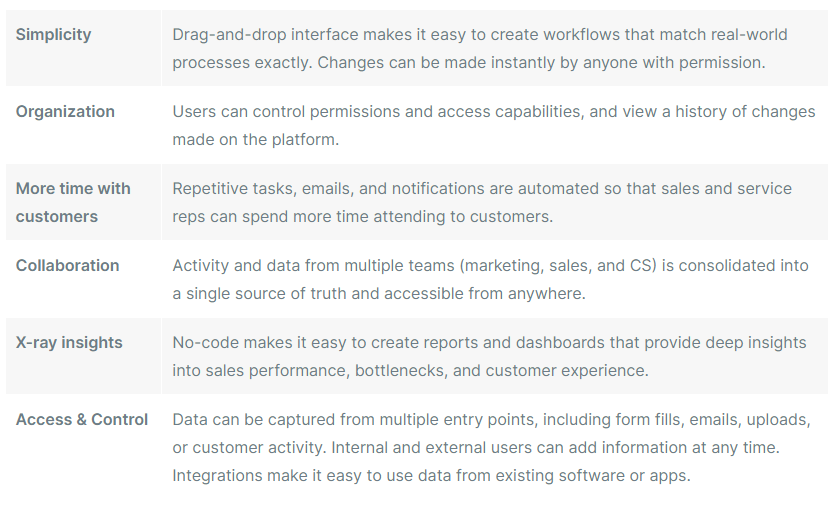
Increasing sales with a no-code CRM alternative
The power of customer relationship management comes from integrating all your data points to better understand the buyer journey and deliver a better customer experience. Simply put: happy customers means more customers. But what does that actually look like? Taking good care of your customers can increase your sales in three ways:
Retention
Sales and support teams that are organized and focused deliver better customer experiences, the kind that build loyalty and generate repeat business.
Expansion
Customers’ needs change. Your products and services do too. CRM identifies new opportunities including upsells, add-ons to existing services, or expansions in the number of users or products.
Evangelism
One of the best outcomes from effective CRM is when your buyers become evangelists for your products. They may provide referrals, good reviews, participate in case studies, or provide feedback that helps you drive further sales.
Create and scale CRM workflows that evolve
Small and medium sized businesses have options for managing customer relationships and building sales. Often the starting point for CRM workflows is a spreadsheet, which are useful up to a certain point of complexity.
When SMBs and startups outgrow spreadsheets, there are typically two paths forward: hiring a developer to build a custom solution, or using a no-code workflow management system. No-code workflow tools provide the flexibility to quickly gain control of workflows, without long lead times or dependency on a developer.
For SMBs who have (or plan to have) citizen developer initiatives, no-code workflow tools free up IT resources and help teams help themselves.
When agility is the top priority, no-code solutions deliver the adaptability and ease-of-use that are essential for evolving businesses to stay competitive.
